It was a judgement call. Obviously I made it wrong because it almost killed me. But it was the first time I had ever run into this sort of situation before. I was not sure what to do about the
fractures in the bedrock wall that was hanging over me.
Should I have put the chisel edge of my five-foot pry bar into it to see if it’s loose? I finally decided that might loosen it up even further and make it more unstable if I was not able to break it loose using the bar. This was a guessing game. I knew it, and I guessed that the bedrock wall would hold together if I left it alone.
I simply guessed wrong this time, that’s all.
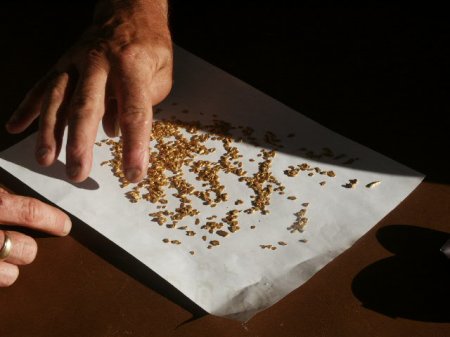
In
dredging for gold, there are a lot of things you are not sure of, so you have to use your best judgment to make a guess.It all started several years earlier when we discovered a
very rich
pay-streak on the Klamath River in northern California near the confluence of Thompson Creek, about 10 miles upstream from the town of
Happy Camp. We were performing a sampling contract for a company out of Salt Lake City. They were looking for a special type of gold deposit, mainly very consistently high-grade for long term production. This particular deposit did not qualify because it did not produce at least a pound of gold
every day. It did produce a pound on some days though, sometimes as much as two pounds. But there were also quite a few two and three ounce days which disqualified the deposit as far as the principals were concerned. So we moved on to sample in other locations for the remainder of that season, and we located several other semi-rich deposits which we left behind in our hunt for the real motherlode.
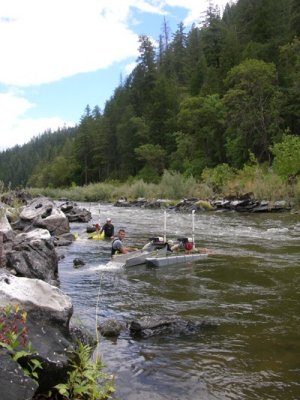 Several years then quickly passed by while the deposits we found during the sampling program could not be touched, in case the company which paid for the sampling decided to exploit the deposits according to their option. They were waiting for the gold prices to skyrocket as we all have been waiting. But instead, the price just slowly kept edging downward. The company finally dropped its lease. So several seasons ago, my partner and I went to work at the head of the deposit where the amount of gold is more inconsistent, but pays quite handsomely in the pockets. Because of other commitments we both had, my partner and I were only able to dredge on a part-time basis, but the deposit did appear to be getting better as we dredged forward. We were getting more excited, and trying to squeeze more and more time in as the season went on.
Several years then quickly passed by while the deposits we found during the sampling program could not be touched, in case the company which paid for the sampling decided to exploit the deposits according to their option. They were waiting for the gold prices to skyrocket as we all have been waiting. But instead, the price just slowly kept edging downward. The company finally dropped its lease. So several seasons ago, my partner and I went to work at the head of the deposit where the amount of gold is more inconsistent, but pays quite handsomely in the pockets. Because of other commitments we both had, my partner and I were only able to dredge on a part-time basis, but the deposit did appear to be getting better as we dredged forward. We were getting more excited, and trying to squeeze more and more time in as the season went on.
The biggest problem we had was the huge boulders! We were working in an average of ten feet of tightly packed virgin hard-packed streambed material. The bottom had a layer of boulders most which we were able to shift around to dredge the gold off the bedrock. But there were occasional huge boulders up in the material, sometimes sitting right on top, just waiting to fall into the hole on top of us. It was a very dangerous hole!
The gold was coming from the bottom two or three feet of virgin hard-pack, and on bedrock if it was rough and irregular. To make the gold really add up in our recovery system, all we had to do was move the volume through and uncover a bunch of the bottom layer. When the bedrock was right for it, we would get a handsome bonus. Sometimes the pockets contained so much gold, we could stir our fingers in it! The bonuses were getting more often as we moved on, and we were really synchronizing our effort to move the material. We were also working really hard!
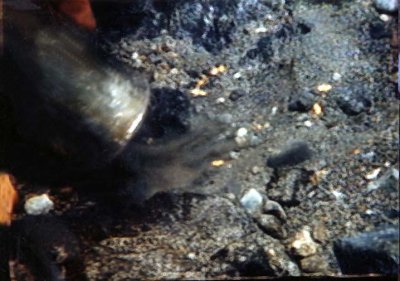 Since we were not using a winch at the time, it was a constant challenge to move the boulders out of the way safely. The two of us together could roll many of them out of the hole. This would allow us room on bedrock to roll the really big ones. When a big one was uncovered in the top layer, which we knew we would not be able to move once it was dropped into our hole, we would try and safely make room for it on the bedrock so we could undercut the boulder and drop it on a spot where the gold had already been dredged. This is a very dangerous method of dredging which I do not generally recommend. It requires you to be constantly on guard; and even so, your life is on the line all the time!
Since we were not using a winch at the time, it was a constant challenge to move the boulders out of the way safely. The two of us together could roll many of them out of the hole. This would allow us room on bedrock to roll the really big ones. When a big one was uncovered in the top layer, which we knew we would not be able to move once it was dropped into our hole, we would try and safely make room for it on the bedrock so we could undercut the boulder and drop it on a spot where the gold had already been dredged. This is a very dangerous method of dredging which I do not generally recommend. It requires you to be constantly on guard; and even so, your life is on the line all the time!
Still, underwater mining can be a dangerous business. Sometimes where you find the richest gold deposits prompts you to take personal risks. You find yourself in situations where every decision you make can directly affect the final outcome.
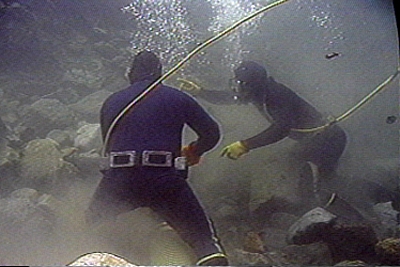 Dredging under a five-ton boulder (underwater estimated weight) and trying to calculate just how much you can take out to loosen it up enough to roll, without taking so much that it rolls in on top of you, is also a dangerous game. We call these boulders “Loomers.” It is a very high-risk job, because it is difficult to tell what material is holding up the boulder, or what affect the current is having on the boulder or the face of your excavation. You can never take your eyes or some part of your body off the boulder even for a split second. You have to be poised to jump out of the way at any given instant; because sometimes, the boulder will come crashing down with no warning whatsoever!
Dredging under a five-ton boulder (underwater estimated weight) and trying to calculate just how much you can take out to loosen it up enough to roll, without taking so much that it rolls in on top of you, is also a dangerous game. We call these boulders “Loomers.” It is a very high-risk job, because it is difficult to tell what material is holding up the boulder, or what affect the current is having on the boulder or the face of your excavation. You can never take your eyes or some part of your body off the boulder even for a split second. You have to be poised to jump out of the way at any given instant; because sometimes, the boulder will come crashing down with no warning whatsoever!
But the worst part of this type of dredging is cleaning the bedrock when there is a loomer hanging over you way up in the material. It is another judgement point (guessing game) as to how much of your “working face” (side of the hole that you are dredging) that you can dredge without undercutting the boulder too much. Most of the time, my partner and I were managing this with me running the nozzle deeper in the hole, and my partner watching the boulder while holding onto my shoulder, ready to pull me out of the hole quickly if the boulder started to move. Needless to say, this was very high-stress for both of us, and confirms the sensibility of a winch.
With a winch, you simply hook onto a boulder before it becomes a “loomer” and you pull it down and out of your hole.
Needless to say, we went home feeling queasy at the end of nearly every day we were working this pay-streak without a winch. I was having nightmares about not being able to move out of the way fast enough, or taking my eyes off a loomer at the wrong moment…
It was becoming apparent that my partner thought I was crazy to take such chances! Actually, I was being very careful; we did not have any near misses. But I knew it was just a matter of time. The odds were against us.(me)
We could have moved to any number of other mining properties if we wanted to. But the gold was so rich on this property, I decided to assume the calculated risks that were involved.
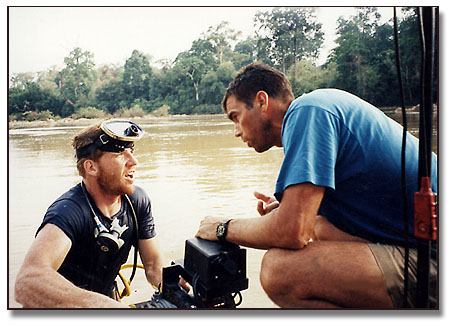 So I did not have my full attention on the state of the bedrock wall that was hanging over me. I noticed that it was fractured and the cracks were big. The problem was that we were dredging under a cave-like overhang of bedrock on the side of the river. We just had our best production days right behind us. I was watching out for big rocks on the working face, and I was paying a lot of attention to the gold I was seeing on the bedrock!
So I did not have my full attention on the state of the bedrock wall that was hanging over me. I noticed that it was fractured and the cracks were big. The problem was that we were dredging under a cave-like overhang of bedrock on the side of the river. We just had our best production days right behind us. I was watching out for big rocks on the working face, and I was paying a lot of attention to the gold I was seeing on the bedrock!
There had never been any time in the past where a bedrock wall had collapsed into one of our dredge holes!
It was time to take another cut off the top-front of our working face; and as I took material off the top six or seven feet, I noticed (again) that I was removing support from the hanging bedrock wall. The thought crossed me that I should do something about it, but what? Perhaps try prying on it to see if the bedrock was loose? It was hanging menacingly right over where I was dredging. I also was keeping my eye on a good sized boulder up in the material that I was going to have to do something about pretty soon.
After we moved the loomer, we were down in the hole underneath the cracked bedrock overhang watching the gold go up the nozzle. Then we uncovered a “two-roller” sitting on the bedrock. A two-roller is a rock that takes two persons to roll. Just as we finished rolling the rock to the back of the hole, with no warning, the bedrock slab came down on top of me in two pieces! The first hit me on the back and shoved me forward, ending up on my right leg. The second piece landed on top of the first and drove my foot hard against the bedrock.
The pain was almost unbearable, but was quickly replaced by panic as I realized that I was pinned solidly to the bottom. The hunks of broken bedrock on top of me had me pinned face down on my cobble pile, and I was not able to turn around to see how big they were; this was terrifying! And it hurt real bad which added to my severe discomfort. My first impulse was to try and pull myself free; and there was no way. This just sharpened the pain as the movement caused the heavy weight to settle more firmly on my foot.
My partner was not hit by the falling bedrock, but was obviously very upset about my situation. He told me later that he thought my leg must have been crushed into pulp by the sheer impact of the slabs when they came down. Both our heads had been in the same position as my leg only seconds before. If the slabs had come down on our heads or backs, we would have been killed instantly. We were both stunned by this reality.
I gave my partner the sign that I was O.K. and signaled for him to try and lift up on the slabs so I could pull my foot out. I still had no idea of how large the slabs were, but was getting a better idea when my partner was not able to even budge them when he put his full weight into it. This added to my panic. I knew we were towards the end of a three hour dive and there was not much gas left in the dredge. The pain in my foot was killing me! I was not prepared to wait while he went up to gas the dredge; I wanted out from under the slabs now!
There is also some risk to gassing up a dredge while it is running. We have caught a few dredges on fire that way! Shutting down a running engine creates a situation where you might not be able to get it started, again. There was only a minute or so of air reserve for me once the dredge shut down. So gassing it up while I was pinned to the bottom was very risky! But what if the dredge ran out of gas while I was pinned?
I signaled to my partner to go get the 5-foot pry bar. Neither of us knew exactly where it was. We had been allowing two other New 49’er Members to dredge in the outside of our hole, but they had taken the day off. They had used our 5-foot pry bar the day before and we had not seen it all day. My partner went off to look for it. As my partner went off to look for it, I really started feeling trapped like I was close to the very uncomfortable end of my life, and it was out of my hands. Very few times in my life have I been in a position where I certainly was going to die within a very few minutes if someone else did not perform exceptionally well! I still had no idea if the slabs were so big that even the 5-foot pry bar would not budge them. The full weight of the slabs were slowly crushing my foot flatter and flatter to the bedrock.
My partner’s airline was tangled in mine. So, as he reached the outside of our dredge hole, his line pulled against mine. He spotted the bar outside of our hole, on the very outside edge. He felt his airline go tight against something; but in his panic to get to the bar, he lunged forward against the tug on the line. When he lunged, it yanked the regulator right out of my mouth! This really panicked me. With all my might, I pulled him back by our airlines. I had no idea he had even located the bar, much less gotten that close to it. When he came back, he did not have the bar; my foot felt like it was being crushed off; and he thought I was certainly dying by the violence with which I had reeled him in. In desperation, I had him try and lift the rock off me again even though I knew it wasn’t going to work! I guess I was starting to get a little delirious in my pain and panic. This time, I tried pulling my leg out with all my strength. The resulting pain was excruciating! Man, was I pinned solid!
There was no alternative. I gave my buddy the signals to first untangle our airlines, and then continue to look for the bar. You don’t know what patience is until you have had to wait for someone under this condition! All I could do was wait and hope. It did not take long before he was back with the bar. I set the point of the bar, myself, to make sure in his own panic, my partner did not get my foot between the bar and the slabs. My whole beingness was in a state of hope that the pry bar would give the necessary leverage to move the slab enough that I could pull my foot free. There was one sincere voice from somewhere telling me that the slabs were too big and heavy even for the pry bar.
Once the bar was set, I positioned myself to pull with everything I had, to break free and gave the signal. He pried; I pulled; and my leg came smoothly free. What a wonderful relief! Then I grabbed my foot to get an assessment of the damage. Possibly a bad bruise, maybe a mild break, I was thinking. My partner misread the action, grabbed me around the waist, and was going to help me get to the surface. I signaled him that I was okay, and then gave him the signal to please go gas up the dredge. I was going to remain down to dredge for awhile longer.
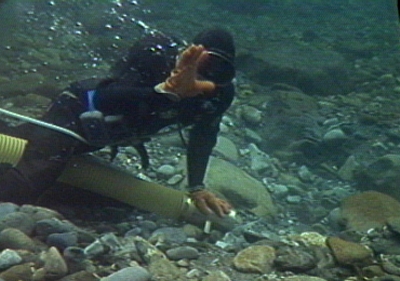 I sincerely believe that if it is at all possible, it is best to stay in the immediate vicinity of a location in which you have suffered severe injury or fear until the immediate shock wears off. I feel the body and mind will heal itself faster, and I also don’t like to leave right away because it leaves me feeling like I am running away. I could see by the look in my partner’s eyes that he did not approve, but I insisted.
I sincerely believe that if it is at all possible, it is best to stay in the immediate vicinity of a location in which you have suffered severe injury or fear until the immediate shock wears off. I feel the body and mind will heal itself faster, and I also don’t like to leave right away because it leaves me feeling like I am running away. I could see by the look in my partner’s eyes that he did not approve, but I insisted.
So we dredged for a few more hours directly in front of the slabs. They were too big to move, so we dredged around them. I made it a point to make sure they were left well behind in our cobble pile before knocking off for the day, even though my foot hurt and I was not able to put very much weight on it. As it turned out, nothing was broken except my boot. The steel tip was crushed so tight that I could barely squeeze my toes out! This was further confirmation of the value of steel tipped boots! Without the steel tip, I surely would have lost some toes or perhaps my whole foot!
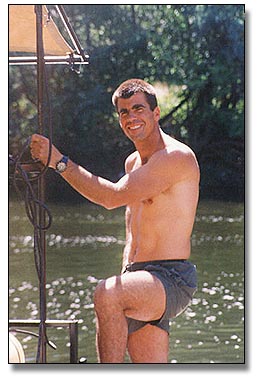 And now? I have dropped back on the pay-streak and have incorporated a floating winch into my dredging program.
And now? I have dropped back on the pay-streak and have incorporated a floating winch into my dredging program.
My partner of that time quit shortly thereafter. The experience, I believe, was harder on him than it was on me. When I told him to go gas the dredge after the accident, I could see that he knew in his own mind that he was not going to dredge along side me, no matter how good the gold was.
And now? I watch out for the bedrock! What am I going to do next time I find a fractured overhang like that? I’m not sure. But one thing I won’t do is turn my back to it!
Here is where you can buy a sample of natural gold.
Here is where you can buy Gold Prospecting Equipment & Supplies.
![]()
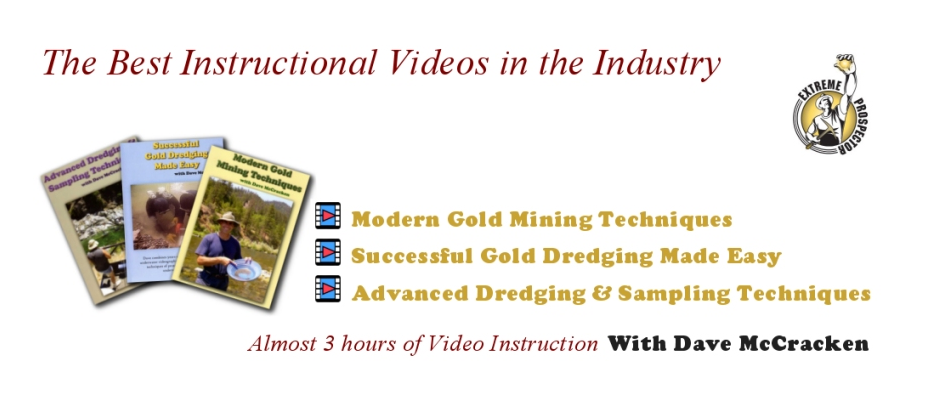
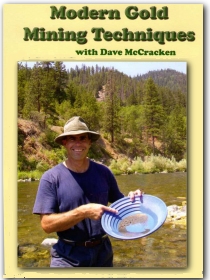
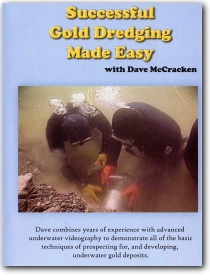
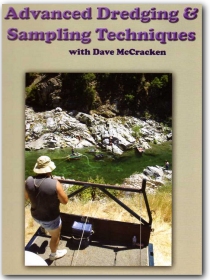




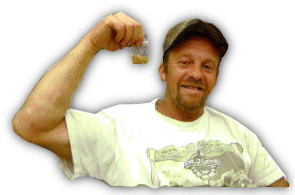
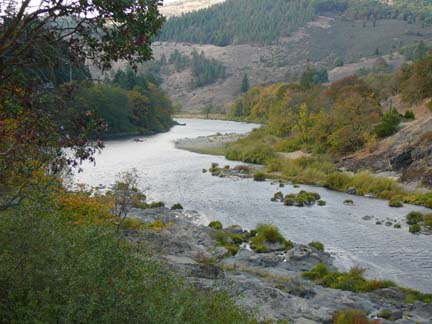
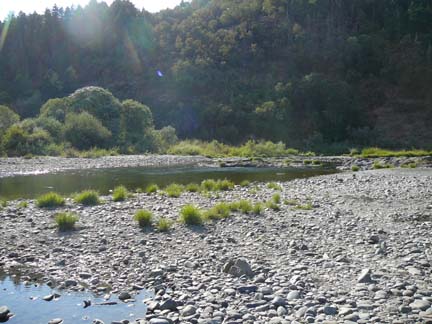
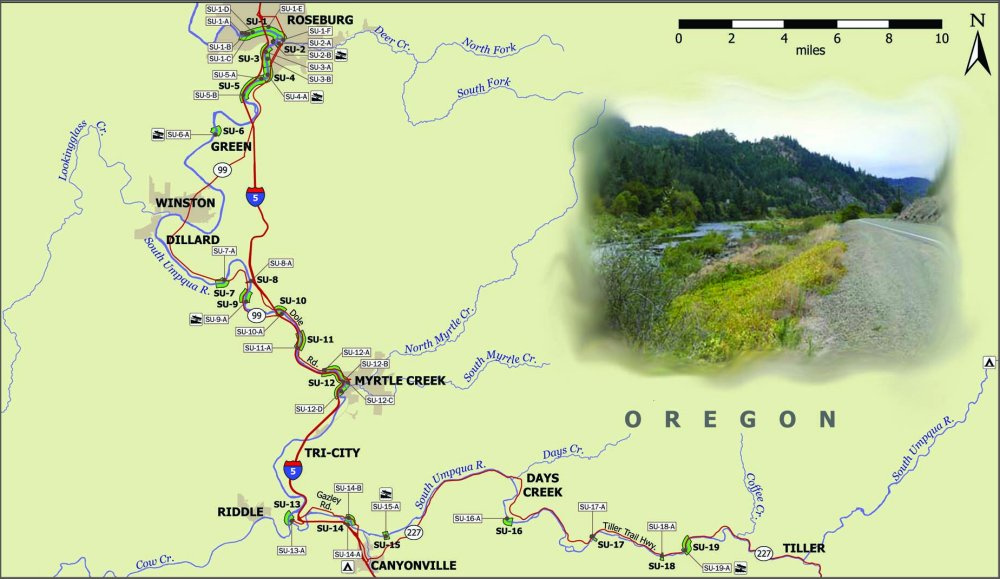
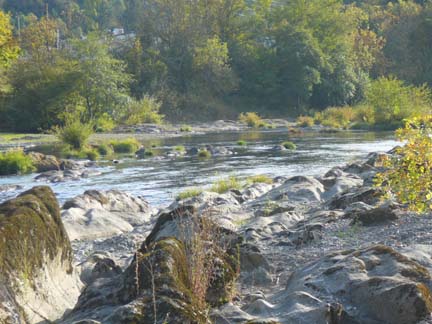
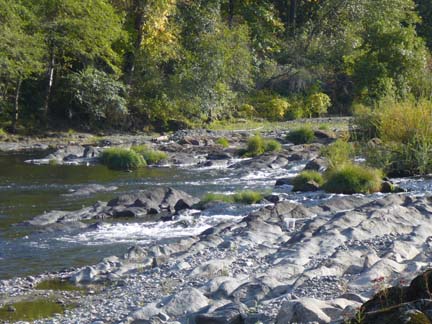
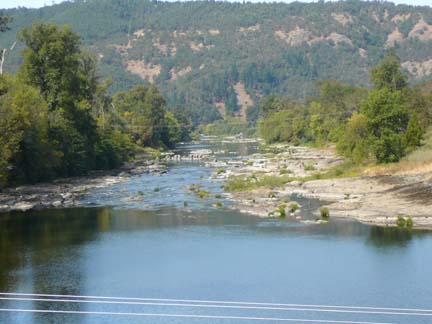
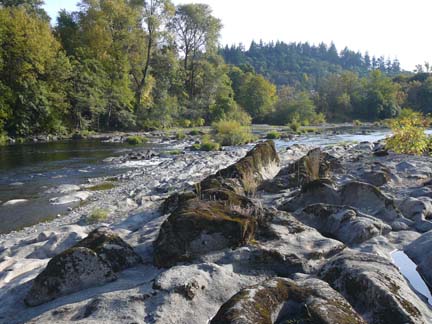
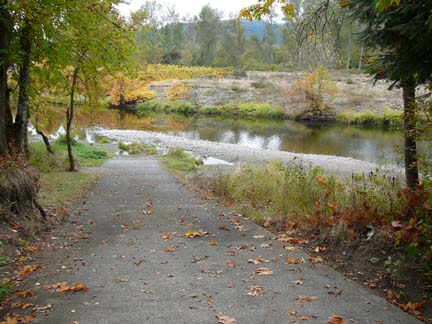
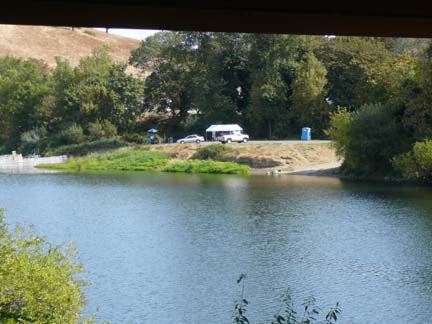
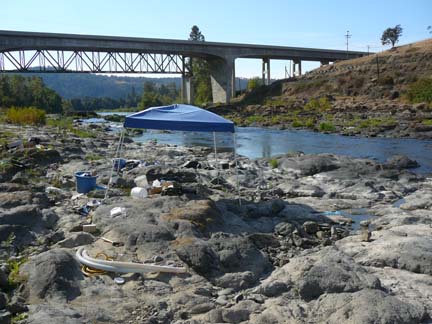
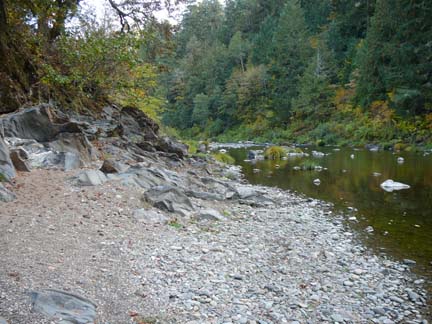
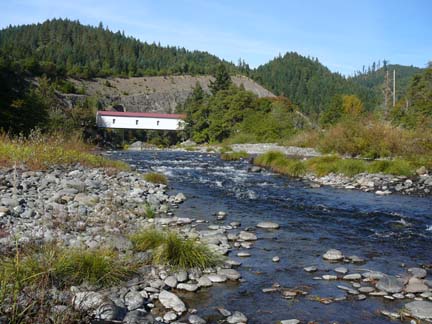


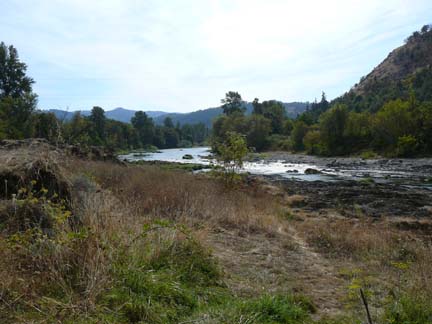
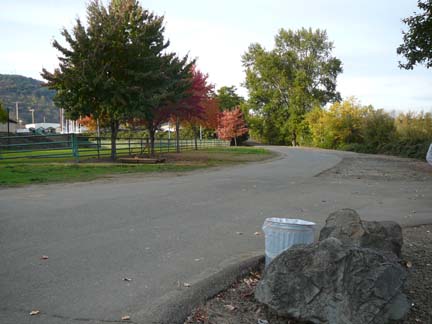
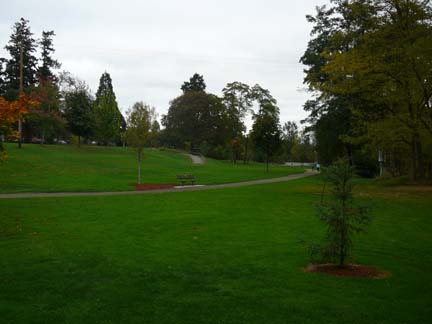
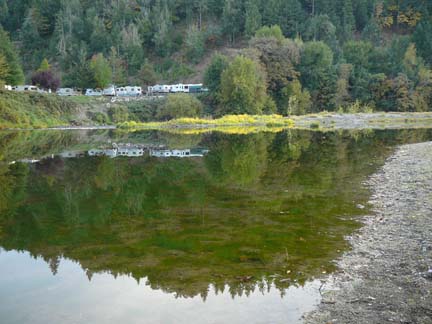
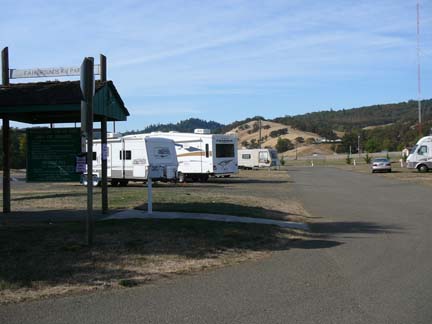
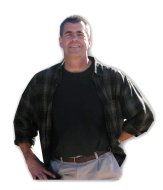

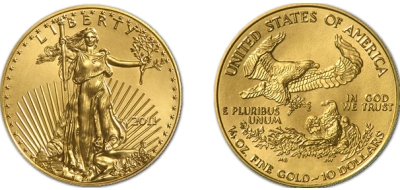

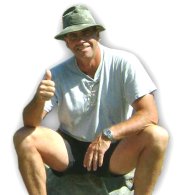
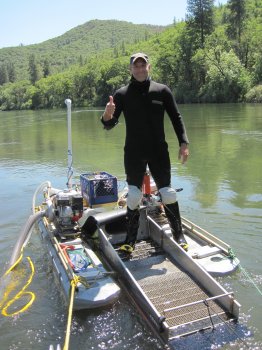
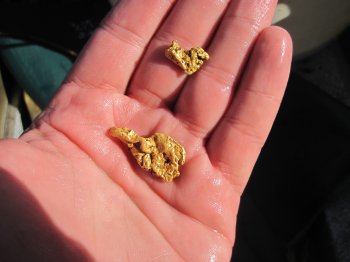
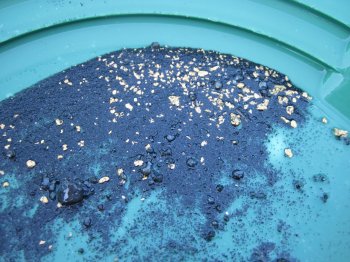
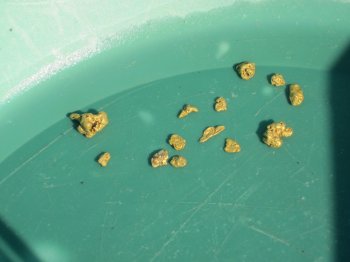
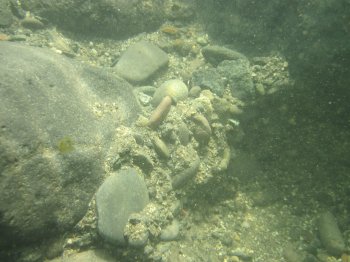
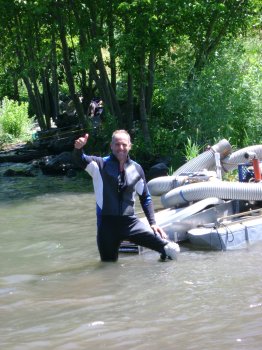
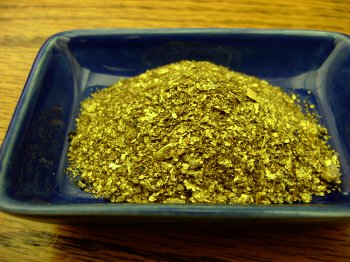 Any contributions which were received beyond 4 PM on 4 November have, and will continue to, generate drawing tickets for
Any contributions which were received beyond 4 PM on 4 November have, and will continue to, generate drawing tickets for 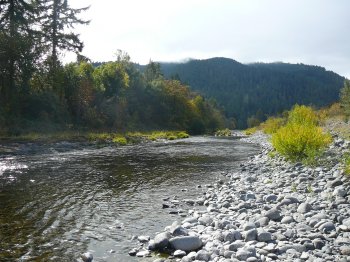
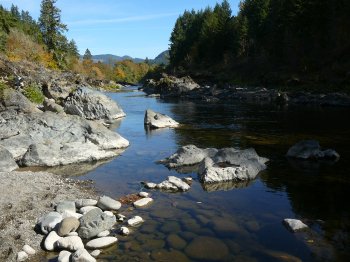
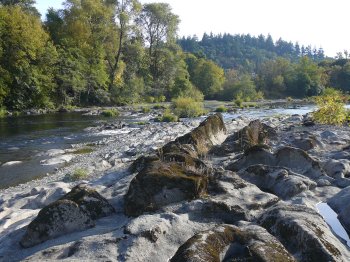
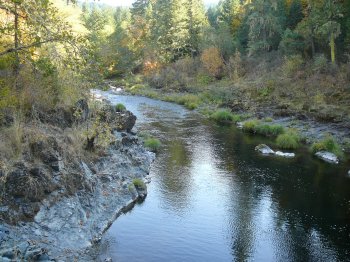
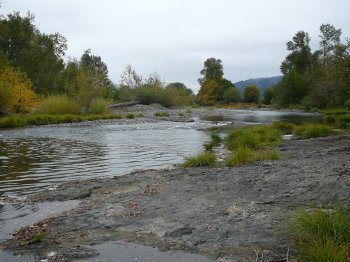 We will be writing up general details, along with an Access Guide, and a list of the camping and lodging facilities which we have identified so far. The
We will be writing up general details, along with an Access Guide, and a list of the camping and lodging facilities which we have identified so far. The 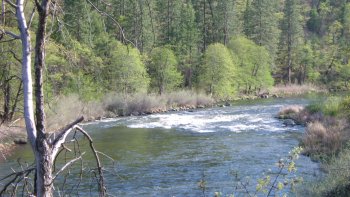
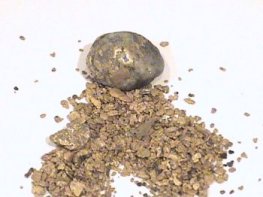
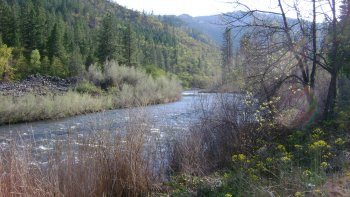 PROSPECTS: This section of river has perhaps the most proven rich mining history of all our mining properties. It is well established that one of the best ways to establish rich gold deposits today is to go to the exact areas where the old-timers found them. To see where the old-timers struck it rich, just look for where they left the large rock piles behind. You will find more
PROSPECTS: This section of river has perhaps the most proven rich mining history of all our mining properties. It is well established that one of the best ways to establish rich gold deposits today is to go to the exact areas where the old-timers found them. To see where the old-timers struck it rich, just look for where they left the large rock piles behind. You will find more 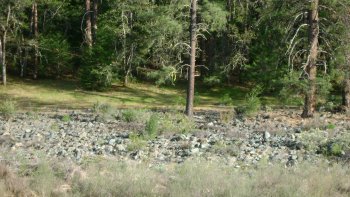
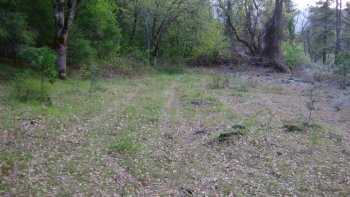
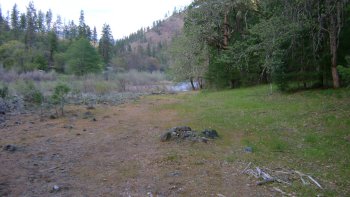
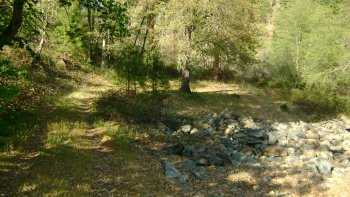
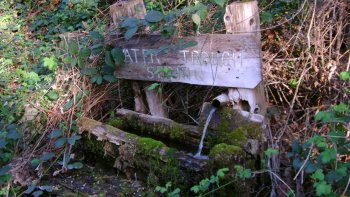
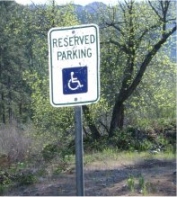
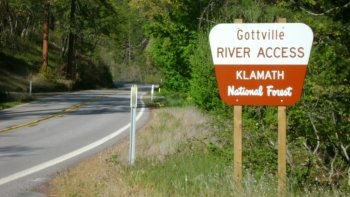
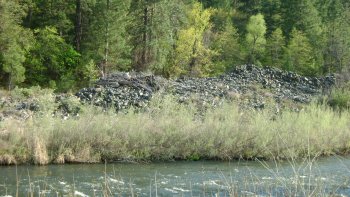
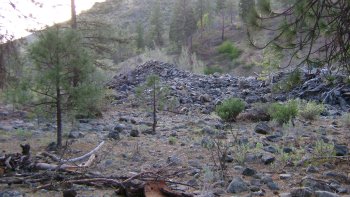
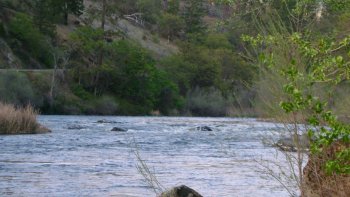
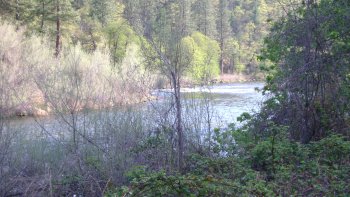
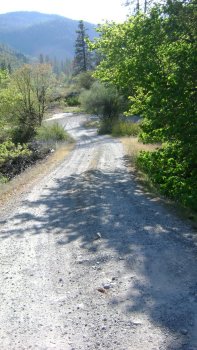
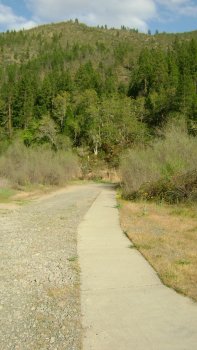
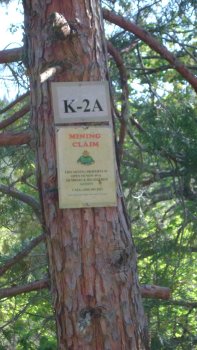
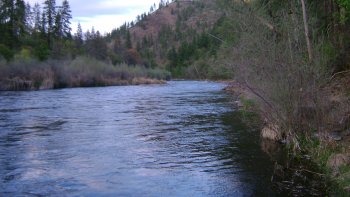
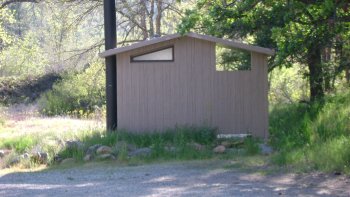
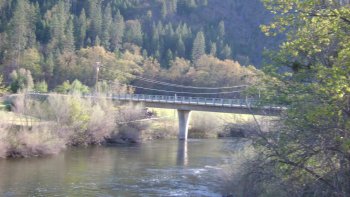
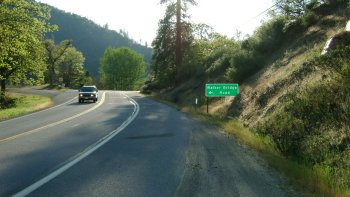



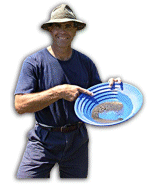
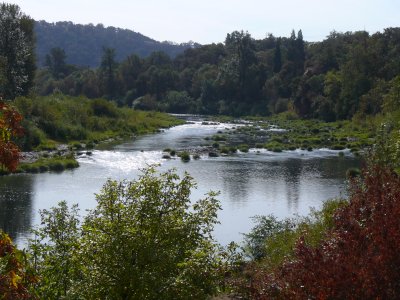
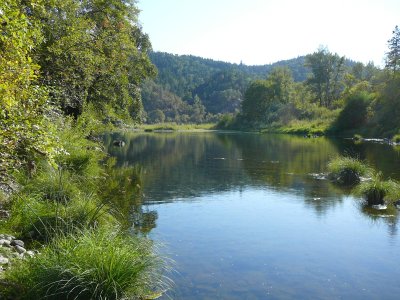
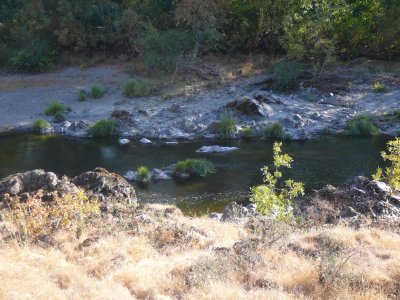 We are still working out the details, but we have already located seven public access areas on this new river that will initially provide suction dredging opportunity to around seven miles of gold-bearing waterway for
We are still working out the details, but we have already located seven public access areas on this new river that will initially provide suction dredging opportunity to around seven miles of gold-bearing waterway for 
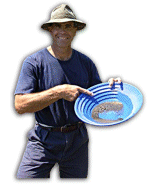
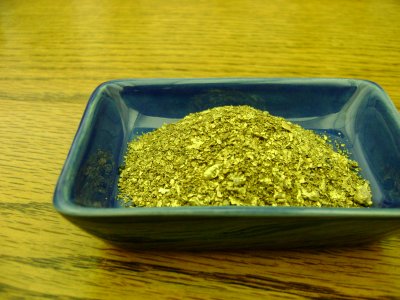
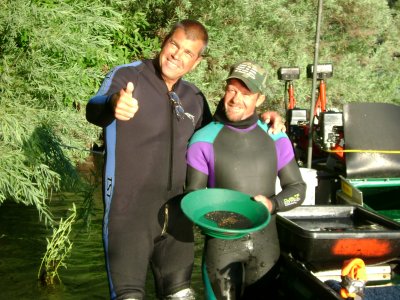
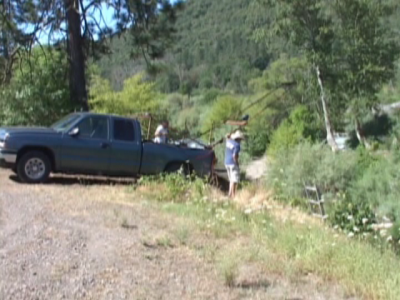 With gold at $1,680 as I write this, I suppose we are likely to see all kinds of interesting things going on. Jim and I came across a local miner who was in the process of lowering a
With gold at $1,680 as I write this, I suppose we are likely to see all kinds of interesting things going on. Jim and I came across a local miner who was in the process of lowering a 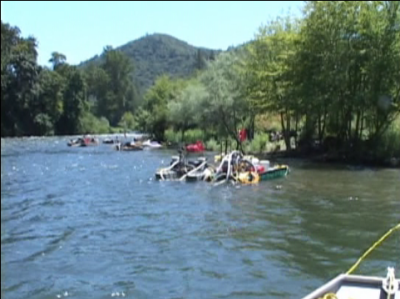
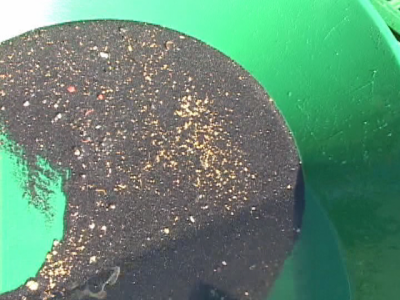
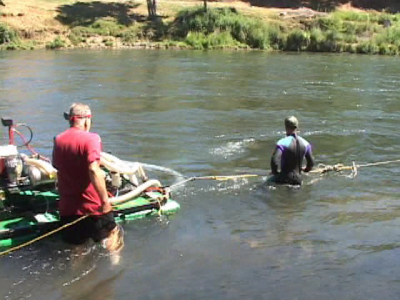
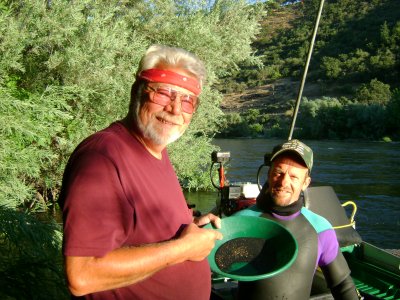
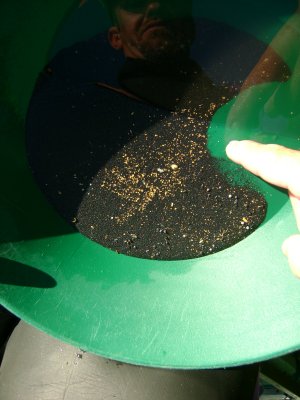
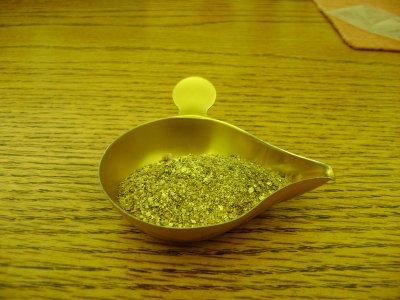
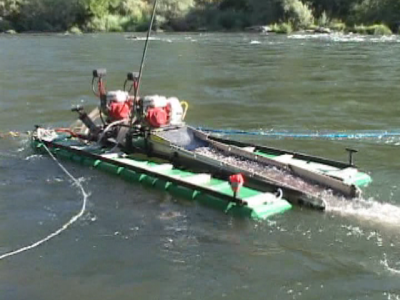

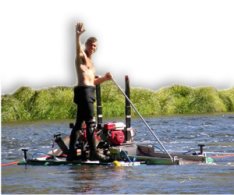
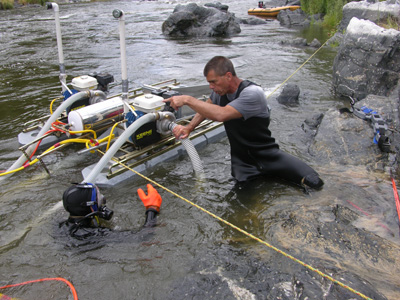
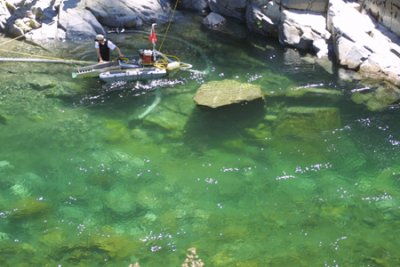
 In
In  Several years then quickly passed by while the deposits we found during the
Several years then quickly passed by while the deposits we found during the  Since we were not using a
Since we were not using a  Dredging under a five-ton boulder (underwater estimated weight) and trying to calculate just how much you can take out to loosen it up enough to roll, without taking so much that it rolls in on top of you, is also a dangerous game. We call these boulders “Loomers.” It is a very high-risk job, because it is
Dredging under a five-ton boulder (underwater estimated weight) and trying to calculate just how much you can take out to loosen it up enough to roll, without taking so much that it rolls in on top of you, is also a dangerous game. We call these boulders “Loomers.” It is a very high-risk job, because it is  So I did not have my full attention on the state of the bedrock wall that was hanging over me. I noticed that it was fractured and the cracks were big. The problem was that we were dredging under a cave-like overhang of bedrock on the side of the river. We just had our best production days right behind us. I was watching out for big rocks on the working face, and I was paying a lot of attention to the gold I was seeing on the bedrock!
So I did not have my full attention on the state of the bedrock wall that was hanging over me. I noticed that it was fractured and the cracks were big. The problem was that we were dredging under a cave-like overhang of bedrock on the side of the river. We just had our best production days right behind us. I was watching out for big rocks on the working face, and I was paying a lot of attention to the gold I was seeing on the bedrock! I sincerely believe that if it is at all possible, it is best to stay in the immediate vicinity of a location in which you have suffered severe injury or fear until the immediate shock wears off. I feel the body and mind will heal itself faster, and I also don’t like to leave right away because it leaves me feeling like I am running away. I could see by the look in my partner’s eyes that he did not approve, but I insisted.
I sincerely believe that if it is at all possible, it is best to stay in the immediate vicinity of a location in which you have suffered severe injury or fear until the immediate shock wears off. I feel the body and mind will heal itself faster, and I also don’t like to leave right away because it leaves me feeling like I am running away. I could see by the look in my partner’s eyes that he did not approve, but I insisted. And now? I have dropped back on the pay-streak and have incorporated
And now? I have dropped back on the pay-streak and have incorporated 


